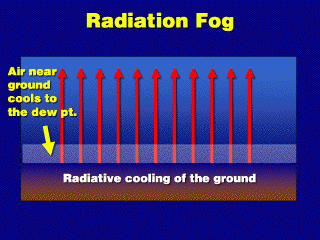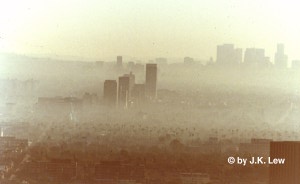 This type of fog is common in wind-sheltered locations on cold, humid nights.
This sort of condition is frequently found in the Central Valley of California
after a winter storm passes (the "Tule Fog").
This type of fog is common in wind-sheltered locations on cold, humid nights.
This sort of condition is frequently found in the Central Valley of California
after a winter storm passes (the "Tule Fog"). This type of fog is common in wind-sheltered locations on cold, humid nights.
This sort of condition is frequently found in the Central Valley of California
after a winter storm passes (the "Tule Fog").
This type of fog is common in wind-sheltered locations on cold, humid nights.
This sort of condition is frequently found in the Central Valley of California
after a winter storm passes (the "Tule Fog").
On a calm, clear night, the air next to the ground cools off by conduction from being in contact with the ground, which has cooled by radiating infrared radiation to space. Since this cold air can't go anywhere until the wind moves it, the radiation fog stays in this shallow (1-10 meters thick) layer of cold air.
If there are any irregularities in the ground, the cold air will flow toward the lower spots, taking the fog with it.
This fog usually "burns off"
or evaporates after the sun has had some time to warm the air up. In the case
of a very thick Tule fog, the ground can't heat up because the top of the radiation
fog reflects sunlight back out. The continued coolness at the ground causes
the Tule fog to persist for hours after sunrise.
